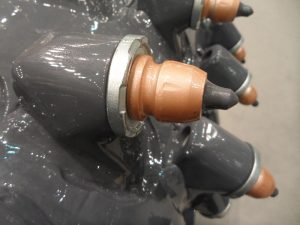
The Brazing Tungsten Carbide Technique
The construction of industrial machine tools requires a lot of technique to be brought together to produce a perfect final product. As well know, the best quality cutter tools have two main parts- the tip and the body. In the drilling industry and other intensive digging industries, the tips are always tungsten carbide while the body is alloy steel or the best quality alloy steel. But one essential thing is the joint joining the two parts. That is where brazing tungsten carbide comes in.
What Is Brazing Tungsten Carbide
Brazing tungsten carbide(click here to know more about it) is a technique used for joining the tip and the body of the machine cutter tools- be it bits or teeth. Although some of the manufacturers used soldering for the joints, quality teeth that are designed for demanding conditions uses brazing tungsten carbide. The process includes placing a metallic braze alloy with fluxing agent between the tungsten carbide tip and the steel. Then, the assembly is heated until the braze alloy melts and flows to fill the gap between the tungsten carbide and steel. That is how the joint is formed.
Factors Determining Strength of The Joint
Although brazing tungsten carbide produces one of the strongest joints, the quality of the joints might vary. There are a number of factors that would determine the strength of the formed joint. First is the condition of the two main components – the carbide tip and the steel body. The two parts must be cleaned thoroughly to remove dirt and other particles thoroughly. Otherwise, the braze alloy will be unable to wet their surfaces properly to form a strong chemical bond. The tungsten carbide tip should be grit blasted or sanded to remove unwanted particles. The steel should be vapor greased or cleaned with a caustic solution. You also need to check the choice of brazing alloy.
The Basic Brazing Steps
- Start with applying influx to the steel surface
- Have the precut braze alloy steel and coat it with some influx
- Position the tungsten carbide shank/component
- Start heating the braze alloy
- Move the tungsten carbide component slightly to alloy the fumes or flux to escape.
- Allow the joint to cool slowly
- Use hot water to wash off excess flux
Benefits Of Brazing Tungsten Carbide
- Does not melt the base metal
- Can join non-similar metals
- Has less thermal distortions
- Excels in multi-part assemblies
- Good for mass production
- Strong joint
